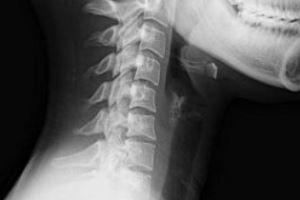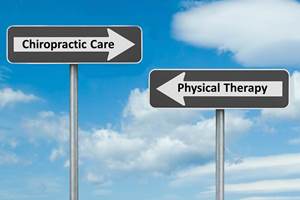Who is Most at Risk for Whiplash Injuries?

Whiplash is a type of injury that occurs when the neck is forcefully moved back and forth. It is most commonly a result of rear-end auto accidents, and it causes a number of painful symptoms, including headaches as well as discomfort and stiffness in the neck. While whiplash injuries can happen to anyone, some people are more at risk than others.
Who is most at risk for whiplash injuries?
Generally speaking, the better your body is at stabilizing itself, the less likely you are to suffer whiplash. Therefore, you are more at risk for whiplash if your physical condition is poor, if you are unaware of an incoming impact, if you are over the age of 65, or if you are female.
While you may not realize it, your body has an automatic stabilization system that responds very, very quickly as soon as you become aware that you’re about to experience an impact. The muscles in your neck will quickly contract in order to protect your discs and ligaments from the impact. Drivers who can see a vehicle coming up behind them in the rear view mirror are more likely to be protected by this stabilization process, making passengers who can’t see the approaching vehicle more at risk for neck injuries.
This stabilization process is also more effective if your overall physical condition is high. Having a larger frame, stronger musculature and a well-functioning nervous system helps to ensure your body responds appropriately to an incoming collision. This can help explain why women are naturally more susceptible to whiplash than men. Because they tend to have less muscle mass in their necks, there is less protection, making injuries more likely. The same is true of people over the age of 65.
What can be done to recover from a whiplash injury?
Unfortunately, whiplash injuries are very common among drivers in the United States. More than 1 million drivers are affected by whiplash every year, and most injuries take place at speeds below 12 mph. Even seemingly mild impacts can result in chronic pain that can interfere with your ability to live your life. While in many cases there isn’t much to be done to prevent a whiplash injury, there are many options to address it. Chiropractic care is one such option.
The first priority after an accident should be to address any serious or life-threatening injuries, such as trauma to the head, significant blood loss, damage to internal organs, bone fractures, etc. If these injuries are not an issue, it is a good idea to get a thorough evaluation from your chiropractor so that he or she can assess the health of your musculoskeletal system. He or she will ask you to describe the accident in detail, perform a complete physical examination, and do any diagnostic imaging necessary to fully understand your condition. Depending on the results, your chiropractor will then work with you to build a treatment plan. This plan might include adjustments to help correct any alignment issues, massage and soft-tissue manipulation, laser pain relief therapy and other treatments designed to relieve pain and restore function. The goal is always to help you heal more completely and more quickly.
Whiplash injuries are common, but there is no need for them to rob you of your ability to live a pain-free life. Contact our office today to learn more about how we can help eliminate your neck pain.
 Most of us are probably aware that staying in good physical condition is essential to maintaining an active lifestyle, especially as we get older. And some of us may even be aware of the links between mobility and independence and social and psychological well-being. Unfortunately, as we age, many of us are challenged to remain active because of disease, pain, stiffness or chronic or acute injuries. These problems are affecting larger numbers of people as we are living longer lifespans.
Most of us are probably aware that staying in good physical condition is essential to maintaining an active lifestyle, especially as we get older. And some of us may even be aware of the links between mobility and independence and social and psychological well-being. Unfortunately, as we age, many of us are challenged to remain active because of disease, pain, stiffness or chronic or acute injuries. These problems are affecting larger numbers of people as we are living longer lifespans. “Take a deep breath.” It’s something we say to each other—and even to ourselves—when the going gets rough and we need to get our emotions under control. But it turns out that this bit of advice isn’t only useful in helping us recover our composure. When practiced on a regular basis, deep breathing can have real physical and mental health benefits.
“Take a deep breath.” It’s something we say to each other—and even to ourselves—when the going gets rough and we need to get our emotions under control. But it turns out that this bit of advice isn’t only useful in helping us recover our composure. When practiced on a regular basis, deep breathing can have real physical and mental health benefits.


 If you’re suffering from acute or chronic back pain–whether it’s been caused by an injury or some type of medical condition–chances are that you’re more interested in finding relief NOW than learning about the many different types of doctors who are part of the healthcare community. But the simple truth is that different types of doctors tend to approach their work in particular ways because of basic differences in their training and clinical experience. This means that it’s worthwhile for a back pain patient to understand at least a little bit about how a physician’s chosen discipline can influence his or her perspective and priorities when it comes to treatment.
If you’re suffering from acute or chronic back pain–whether it’s been caused by an injury or some type of medical condition–chances are that you’re more interested in finding relief NOW than learning about the many different types of doctors who are part of the healthcare community. But the simple truth is that different types of doctors tend to approach their work in particular ways because of basic differences in their training and clinical experience. This means that it’s worthwhile for a back pain patient to understand at least a little bit about how a physician’s chosen discipline can influence his or her perspective and priorities when it comes to treatment.

